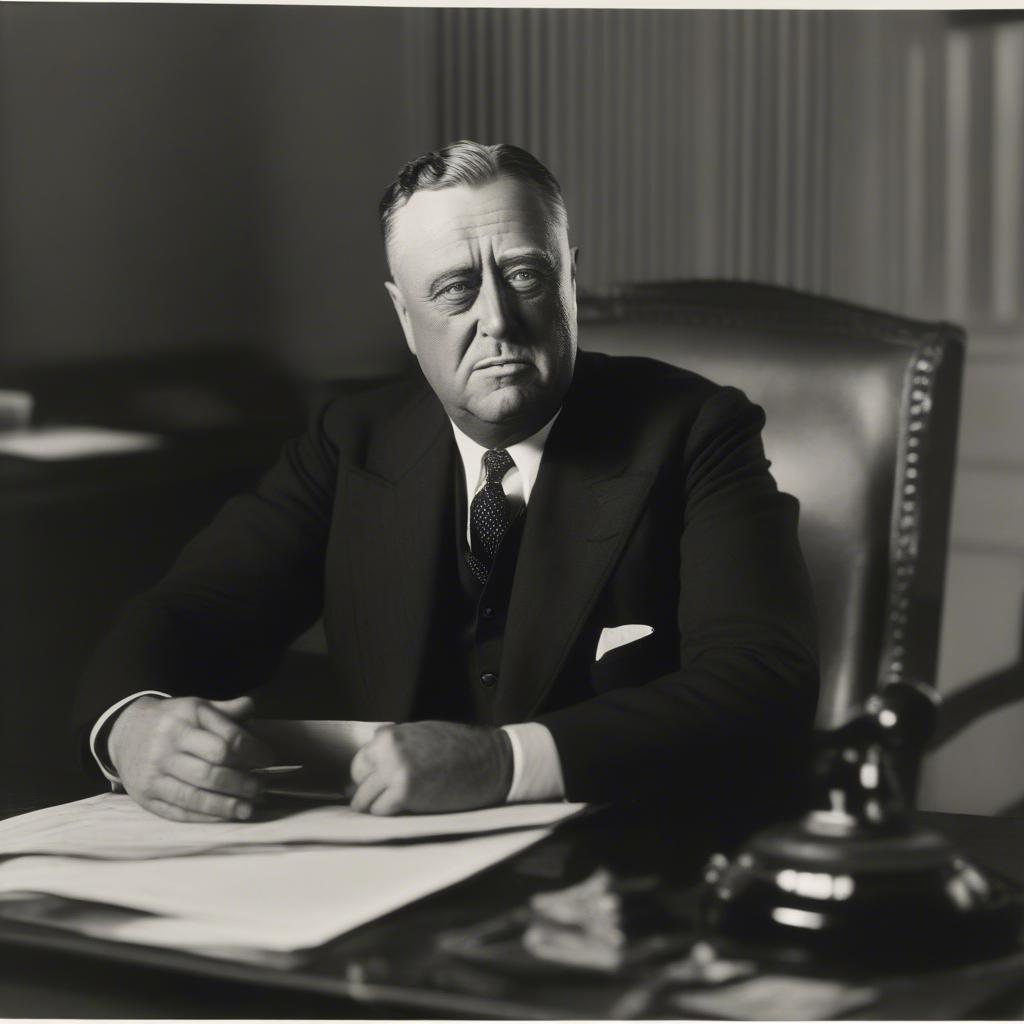
Franklin Delano Roosevelt (FDR) was the American president during World War 2. He led the United States through the Great Depression and most of World War II, serving from 1933 until his death in April 1945, just weeks before the war’s end. His presidency was marked by unprecedented challenges, both domestically and internationally, requiring decisive leadership and innovative policies. FDR’s impact on American history is profound, shaping not only the nation’s response to global conflict but also its social and economic landscape.
FDR’s leadership during World War 2 is often characterized by his commitment to international cooperation and his unwavering resolve to defeat the Axis powers. He forged strong alliances with Great Britain, the Soviet Union, and China, forming the bedrock of the Allied forces. His ability to navigate complex international relations and maintain unity among diverse nations proved crucial to the war effort. FDR skillfully utilized his communication skills, connecting with the American people through his “fireside chats,” which offered reassurance and instilled confidence during times of uncertainty. His communication fostered national unity and a shared sense of purpose, essential for mobilizing the nation’s resources for the global conflict.
 FDR addressing the nation during wartime
FDR addressing the nation during wartime
One of the most significant challenges FDR faced was the Great Depression, which gripped the nation when he took office. His “New Deal” programs aimed to alleviate economic hardship and provide relief to millions of Americans. These programs, ranging from infrastructure projects to social security, fundamentally reshaped the role of government in American life and laid the foundation for the modern welfare state. Just as the nation began to recover from the economic crisis, the world plunged into another global conflict. FDR recognized the gravity of the situation and steered the United States towards supporting the Allied cause, even before the country’s direct involvement in the war. Similar to the question of who was the president during the great depression, understanding FDR’s leadership during this period is crucial to understanding his overall legacy.
FDR’s foreign policy leading up to World War 2 was marked by a careful balancing act. He had to navigate the isolationist sentiments prevalent in American society while recognizing the growing threat of fascism in Europe and Asia. He implemented the Lend-Lease program, providing material support to Great Britain and other Allied nations, which was a crucial step towards greater American involvement in the war. This act demonstrated FDR’s understanding of the interconnectedness of global security and the importance of collective action against tyranny. As the war progressed, FDR played a pivotal role in shaping the post-war world order. He worked closely with Winston Churchill and Joseph Stalin to lay the groundwork for the United Nations, an international organization dedicated to maintaining peace and promoting cooperation among nations. He envisioned a future where international disputes could be resolved through diplomacy and dialogue rather than military conflict. Understanding the context of who was president in 1984 and who was president in 2001 helps to appreciate the long-term impact of FDR’s wartime leadership and its influence on subsequent presidencies.
FDR’s leadership during World War 2 was not without its critics. Some questioned his decision-making process and his expansion of executive power. However, his unwavering commitment to democratic principles and his ability to inspire hope and resilience in the face of adversity remain enduring aspects of his legacy. His leadership was instrumental in guiding the United States through one of the most tumultuous periods in its history. Knowing more about who founded the republican party and who is on a two dollar bill provides a wider perspective on American political history and the context of FDR’s presidency.
In conclusion, Franklin Delano Roosevelt, the American president during World War 2, steered the nation through both the Great Depression and a global conflict, leaving an indelible mark on American history. His leadership, characterized by international collaboration and unwavering resolve, was crucial to the Allied victory. His domestic policies reshaped the relationship between the government and its citizens, and his vision for a post-war world laid the foundation for international cooperation and the pursuit of peace.